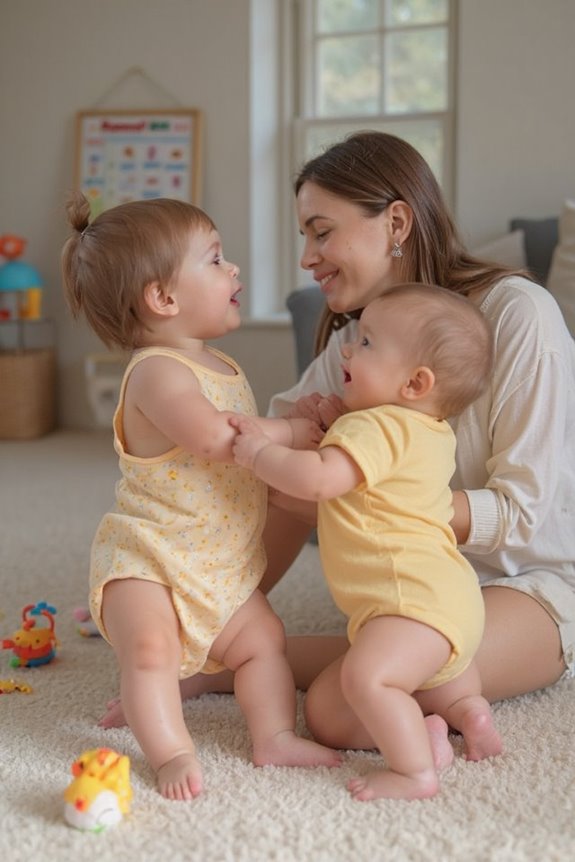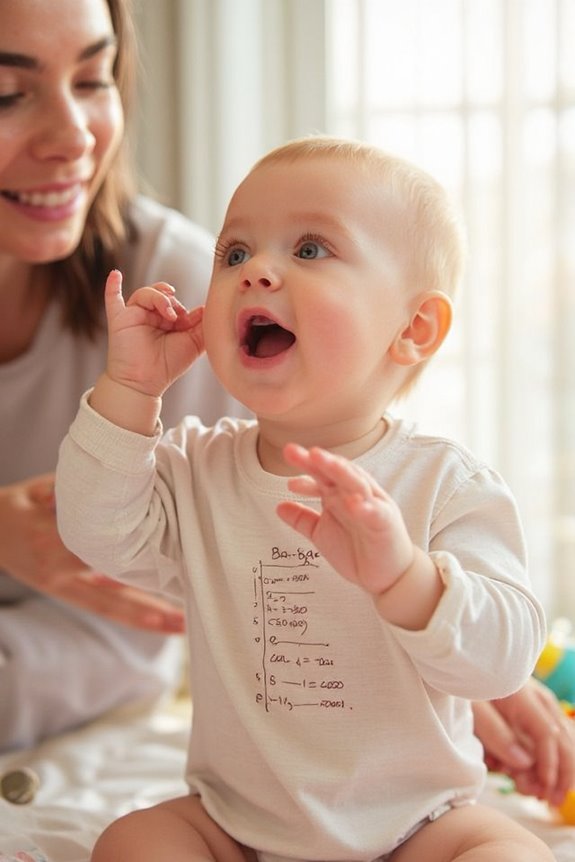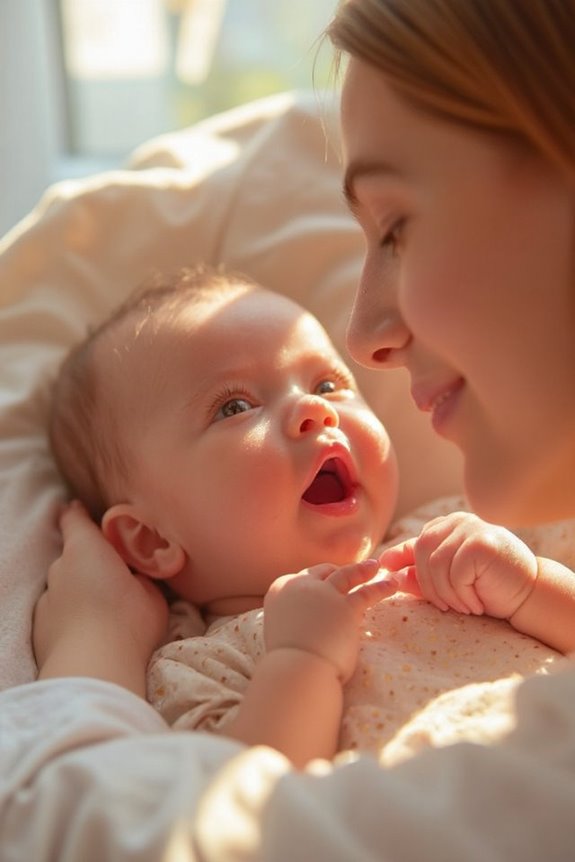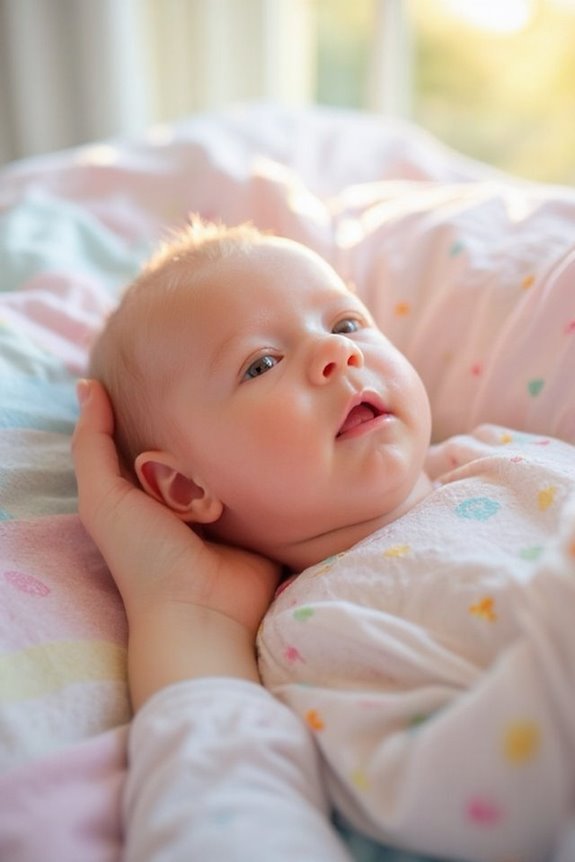Babies stare at strangers as part of their cognitive development. This intense looking helps them process new information, distinguish between familiar and unfamiliar faces, and learn social patterns. It’s actually a sign of healthy brain development – your baby is actively learning through observation and building their understanding of social interactions. Staring allows them to assess new people while feeling secure with you nearby. The following sections explain how this fascinating developmental process shapes your child’s social awareness.
Key Takeaways
- Babies stare at strangers as a form of visual exploration to process new faces and gather information.
- Staring helps babies distinguish between familiar and unfamiliar people, developing their social recognition skills.
- Intense observation allows infants to assess potential risks and build expectations about social interactions.
- Babies use statistical learning to recognize patterns in strangers’ behavior and facial expressions.
- Cultural factors influence how babies interact with strangers based on observed parental reactions to unfamiliar people.
The Developmental Science Behind Baby Staring
When you notice a baby fixating on your face with an unwavering gaze, you’re witnessing a fascinating process of early cognitive development. This staring behavior isn’t random—it’s a critical form of visual exploration that helps infants process and understand their environment.
Babies are naturally drawn to faces and interesting features as part of their social engagement skills. Their extended gazes indicate:
- Active learning and information processing
- Healthy brain development and alertness
- Early social sensitivity development
Research shows that infants use staring to learn about their world, particularly through open eyes and eye contact. They’re more likely to look at objects that others are viewing, demonstrating early imitative behaviors. This visual engagement helps them build neural pathways essential for understanding social cues and emotions.
Cognitive Learning Through Observation

As babies fix their gaze on strangers, they’re actively engaging in a sophisticated process of cognitive learning through observation. When your infant stares intently at someone new, they’re employing statistical learning to recognize patterns and regularities in human behavior.
This observational learning serves as a foundation for cognitive development in several ways:
- Babies use their mirror neuron systems to understand others’ actions
- They develop cause-and-effect understanding by watching strangers’ movements
- Through repeated observation, infants form associations between facial expressions and emotions
- Social learning occurs as they observe cultural and interpersonal interactions
Your baby isn’t just looking—they’re building mental models of human behavior. By watching strangers, infants develop the cognitive tools needed for future social interactions, problem-solving abilities, and emotional intelligence.
When Curiosity Meets Social Development

Your baby’s intense staring at strangers represents the fascinating intersection where natural curiosity meets developing social skills. This behavior is part of how infants learn about their world and establish social boundaries.
When your baby stares at strangers, they’re:
- Gathering information through social cues
- Evaluating unfamiliar people for potential interaction
- Learning to differentiate between familiar and unfamiliar faces
- Developing risk assessment abilities
Research shows that infant behavior around strangers is complex – even at five months, babies can distinguish between laughter among friends versus strangers. They’re actively building expectations about social interactions by observing others.
Your reaction to their staring matters too. When you respond positively to their curiosity, you’re helping shape their understanding of appropriate social engagement with people outside their immediate circle.
How Parents Can Respond to Baby’s Staring Behavior

Parents often feel uncertain about what to do when their baby locks eyes with strangers in public places. This natural behavior serves as a crucial developmental milestone that deserves thoughtful parental response.
When your baby stares at someone new:
- Provide parental reassurance by staying close, offering a sense of security while they process new faces
- Use nonverbal cues like smiling to model positive social behavior
- Allow time for adjustment without forcing interaction
- Maintain patience as your baby learns to navigate social situations
Consider encouraging interaction if your baby seems comfortable:
- Acknowledge the stranger’s presence with friendly words
- Use a calm voice to normalize the experience
- Demonstrate appropriate social exchanges
These strategies support your child’s development while respecting their natural curiosity about new people in their environment.
Cultural Differences in Baby-Stranger Interactions
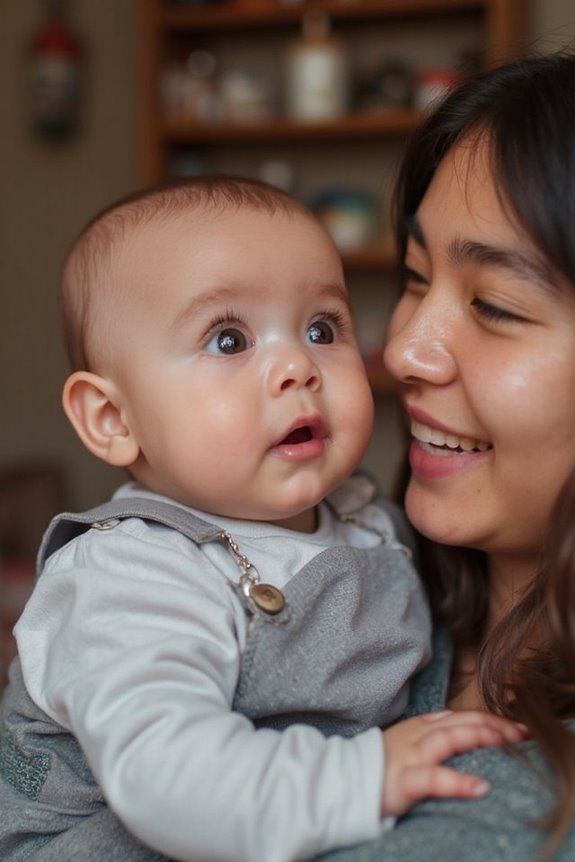
While parental responses to baby staring are important, how babies interact with strangers varies dramatically across cultures worldwide. These differences greatly impact attachment styles and social development:
- In the Beng culture of West Africa and among Brazilian Piraha Indians, babies are encouraged to interact with multiple caregivers and strangers from birth.
- Western cultures often emphasize “stranger danger,” creating more cautious interactions.
- The Strange Situation procedure, commonly used to assess attachment, may contain Western biases that don’t reflect global norms.
- Babies learn cultural norms about stranger interactions primarily through observing their parents’ reactions.
- Research comparing German and Cameroonian Nso infants shows distinct differences in how babies respond to unfamiliar faces.
These cultural practices directly influence how comfortable a baby feels when staring at or interacting with someone they don’t recognize.
Frequently Asked Questions
Can a Baby’s Staring Predict Their Future Personality Traits?
I can’t confidently link a baby’s staring behavior to specific personality traits. While it shows social curiosity, personality development is complex and influenced by many factors beyond early visual preferences.
Why Do Some Babies Stare Longer at Certain Strangers?
I’ve noticed babies stare longer at certain strangers based on facial features that trigger their curiosity. It’s fascinating how attachment theory suggests they’re learning social cues and building templates for future relationships through these observations.
Is Excessive Staring at Strangers Ever a Developmental Concern?
While excessive staring might worry you, it’s rarely a developmental concern. I’d only be concerned if your baby misses other developmental milestones or shows unusual social patterns. Most staring simply indicates normal curiosity.
How Does Technology Exposure Affect Babies’ Reactions to Strangers?
I’ve found that excessive screen time reduces babies’ ability to read social cues, potentially making stranger interactions more stressful. They miss vital face-to-face social interactions that teach them how to respond appropriately to unfamiliar people.
Do Twins Exhibit Similar Staring Patterns Toward the Same Strangers?
Yes, twins often exhibit similar staring patterns at strangers due to their shared genetics. I’ve noticed this reflects their twin bonding process and parallel social development, though environmental factors also play a role in their responses.


